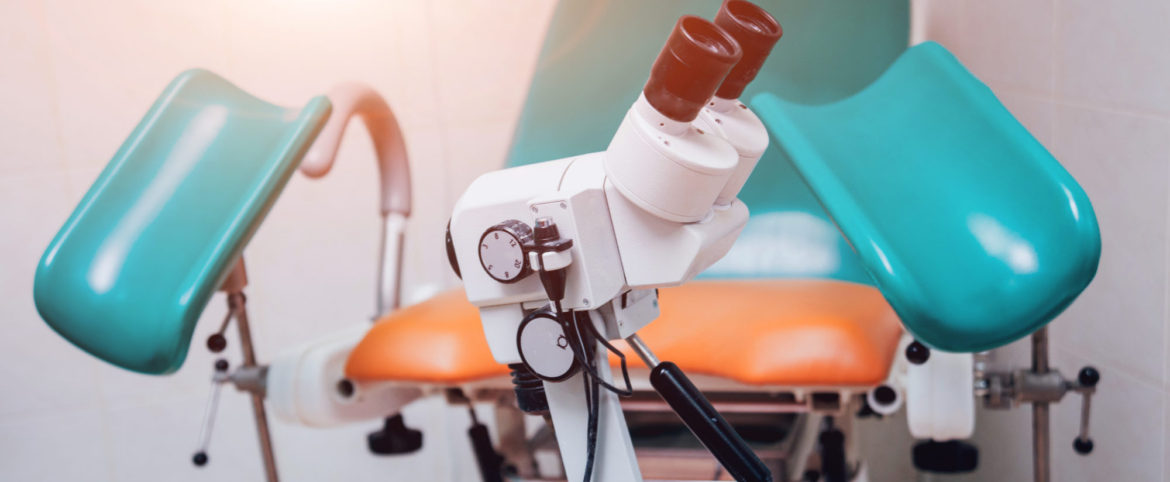LLETZ surgery is an effective, minimally-invasive procedure for the treatment of pre-cancerous changes in the cervix. We offer private LLETZ treatment by an experienced consultant gynaecologist, at one of our specialist clinics in the heart of London.
LLETZ is the surgical technique most commonly used to excise abnormal, CIN cells from the surface of the cervix. It stands for large loop excision of the transformation zone. A fine loop of heated wire, known as diathermy, is used to excise the area that contains the abnormal cells. The heat acts to seal all the blood vessels in the area, as the wire cuts, so that the process is quick and efficient, with reduced risk of side-effects and bleeding. LLETZ is the procedure most often used by Mr Thomas Ind for the treatment of CIN.
Where is LLETZ treatment carried out?
Treatment can be performed as an outpatient in one of our clinics state-of-the-art colposcopy suites. Occasionally, women find colposcopy examination stressful or uncomfortable, in these circumstances the clinic can arrange for the treatment to be carried out under general anaesthetic. This may also be necessary for women with some pre-existing medical conditions.
What happens during LLETZ treatment?
You will be asked to remove your clothing from below the waist. You will then lie on a specially-designed examination couch, with your legs in supports. The experienced staff at the clinic will be there to assist and support you during the treatment. They will help you get into position and provide a sheet, so that you can cover your body and maintain your dignity throughout.
The consultant will carefully place a sterile, plastic speculum into your vagina, as happened during your smear test or colposcopy examination. This enables Mr Thomas Ind to clearly see and access your cervix for treatment. He will be able to examine the cervix closely through the colposcope’s lens, so that he can identify the precise area for excision.
Mr Ind will inject local anaesthetic into the area. This may sting a little, but the medication is very fast acting and will rapidly numb the area and sometimes makes you feel a little light headed. The surgeon will use the diathermy wire to excise the area of abnormal cells from the cervix, and a suction device will be turned on to drain any fluid and fumes. The excised tissue will be sent to the laboratory for analysis.
The whole procedure usually takes less that 15 minutes.
How long does it take to recover from LLETZ treatment?
After LLETZ treatment under local anaesthetic you will be able to go home on the day of the procedure. We recommend that women do not return to work the same day, it’s better to take some time to rest and recover. Most women can safely return to work the day following the procedure.
It is normal to have some bleeding and a cramping abdominal pain after LLETZ treatment. This can be relieved by over-the-counter analgesics like paracetamol and ibuprofen. If you have heavy bleeding, especially if it is heavier than a period or has large clots, you should contact your local accident & emergency or the clinic for urgent assessment.
Use a sanitary pad to collect the blood. You should avoid tampons and refrain from sex for four weeks after LLETZ treatment because this can increase the risk of infection and disturb the healing cervix, leading to bleeding complications.
Is LLETZ treatment safe?
Treatment for CIN is generally very safe and Mr Ind and the supporting team at the clinic work hard to minimise any risks. However, complications can happen with any procedure, with LLETZ these include:
- Bleeding: This is usually like a period, but can rarely be severe, requiring admission to hospital and blood transfusion. Bleeding can happen immediately, or late after treatment due to infection from the natural bacteria in the vagina.
- Infection: This can cause an offensive discharge, pain and ongoing bleeding following the procedure.
- Problems with future pregnancies: Older, more invasive methods of treating cervical problems sometimes led to problems with premature births or late miscarriages in pregnancy. These complications happen much less commonly with LLETZ treatment, indeed there is debate about whether an association exists. It is probable that pregnancy problems happen extremely rarely, with women that need extensive or repeated treatment being more vulnerable. Mr Ind will discuss the potential advantages and disadvantages with you. However, the problems are so rare that they are nearly always outweighed by the dangers of not having treatment for CIN.
If you have any worries about your health, or concerns about complications, our team will be on hand to answer your questions and support your recovery.
Is LLETZ treatment successful?
In expert hands, LLETZ is a very effective treatment for pre-cancerous changes on the cervix. Ninety-five percent of women are cured following their first treatment. Other women may need continued surveillance for minor abnormalities or repeat treatment, which will be arranged by the clinic.
Follow-up after LLETZ treatment
Mr Ind will arrange an appointment after your procedure to check that you have recovered and to discuss the results of the laboratory analysis. The clinic will then arrange follow-up and monitoring according to the abnormality found. You may need repeat colposcopy or more frequent smear tests for a period of time.
Find out more:


